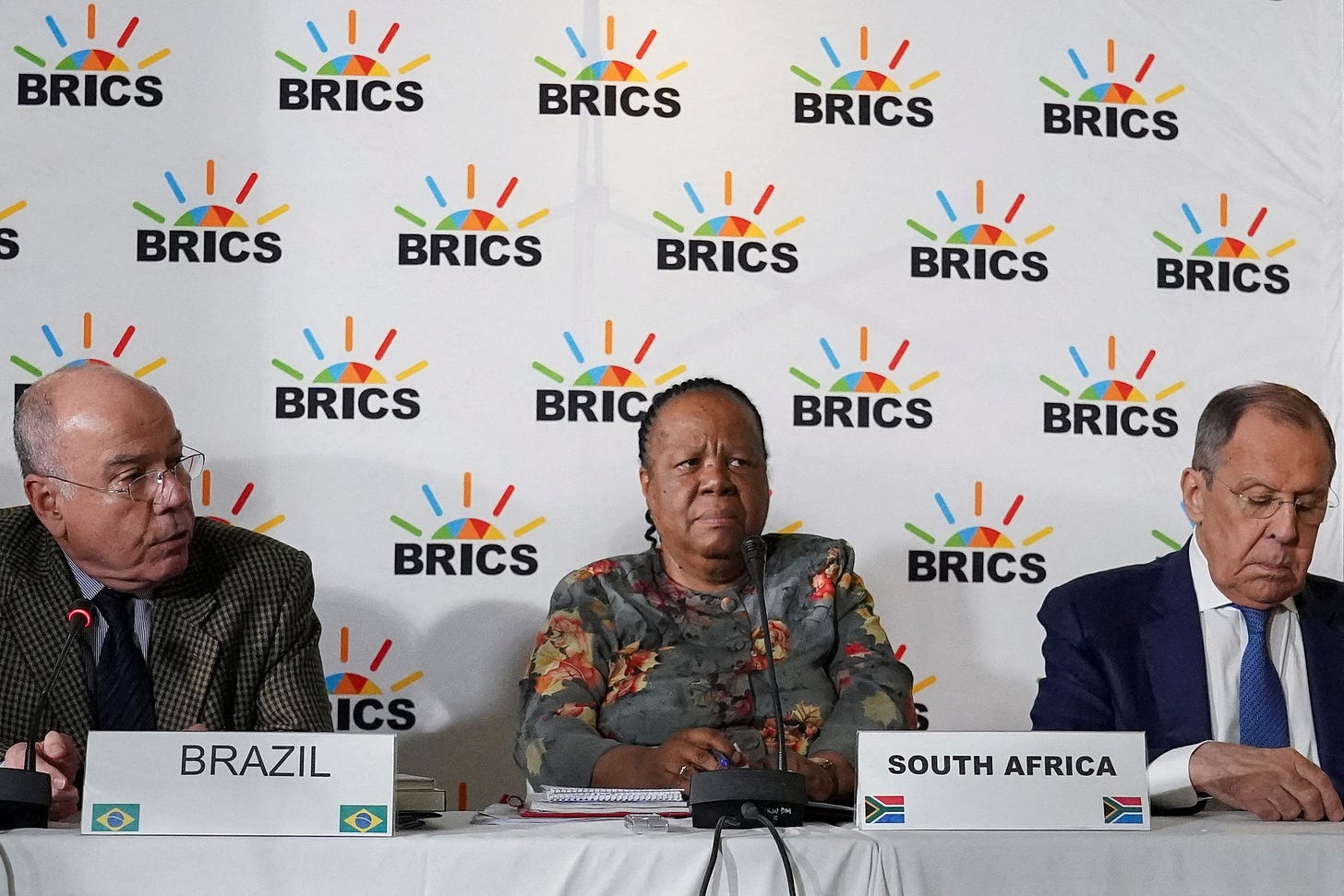5 Answers to Questions You May Have (Part 2): BRICS
The 5 Questions and Answers is focused on the BRICS nations
#1 How did BRIC come about?
In 2001, the Goldman Sachs Economist, Jim O Neil, made the term “BRIC” to refer to Brazil, Russia, India and China, identifying them as fast growing countries with dynamic business potential. You can read his paper and analysis here. It was a marketing term to encourage investment in those countries. A second marketing report was released in 2004 and a third in 2007.
By 2007, Morgan Stanley Capital International (MSCI) made an Exchange Traded Fund (ETF) call BRIC ETF where investors can invest to get so called strong returns in the fund.
There are other investment marketing terms Jim O Neil popularized like MINT (Mexico, Indonesia, Nigeria, Turkey) in 2013 and Next Eleven (Bangladesh, Egypt, Indonesia, Iran, Mexico, Nigeria, Pakistan, Philippines, South Korea, Turkey, and Vietnam.
#2 How Strong has the BRIC ETF Performed?
Ever since the Russian-Ukraine war, all Russian stocks were removed from the exchange traded fund. The BRIC ETF is now the BIC ETF. Noteworthy holdings as of September 8th, 2023, include Chinese tech firms like Tencent, Alibaba, Indian firms like Reliance Industries (energy) and Infosys (tech consulting), and Brazilian firms like Vale (metals mining) and Petrobras (oil & gas).
For long-term "buy & hold" investors over a 15-year span, the fund has performed poorly. A $10,000 investment at its inception would now be valued at $8,256, reflecting a 17% loss.
One reason for poor performance is that many of the holdings in the BRIC ETF are government owned enterprises. Brazilian Petrobras is state owned and most firms in China have the Chinese government control a “a special management share” where the government owned a significant equity stake allowing significant influence over investment and operational decisions. This often leads to decisions driven by political interests rather than shareholder concerns. Starting November 2020, the Chinese Community Party unleashed a massive big tech crackdown on its tech firms. Alibaba was fined $3B (4% of its revenue in 2019) for monopolistic practices, gave 22 fines to Tencent, and more.
If you invested that same money in the American S&P 500, you would have nearly tripled your money to $30K, averaging a 7.6% return per year every year for 15 years. If you invested in the Canadian S&P 500 or the British FTSE 100 you would have averaged ~6% or 1.25% return per year every year for 15 years respectively.
In America, there’s very few government owned enterprises (34) and none of these enterprises are in the S&P 500. Canada(47) and UK (50) have more government owned enterprises than America, but significantly less than Brazil(149), India(365), Russia(4100), or China(150K).
#3 How did the BRICS Organization form?
By 2009, these nations had their first summit and decided to invite South Africa and South Africa joined in 2010. By 2010, BRIC went from a marketing term to encourage western investors to investment in emerging markets into BRICS, a geopolitical/economic bloc.
As of 2022, the five BRICS nations have a combined economic might of $25.9T USD, which is slightly higher than America’s GDP of $25.46 when looking at current exchange rates priced in USD.
If we look at prices at purchasing power parity (the prices of goods & services in South Africa are generally cheaper than in America, so economists adjust GDP based of purchasing power), then the BRICS nations’ GDP is $52T, which is close to the economic output of the Group of 7 (G7) - America, Canada, France, Germany, Japan, UK, and Italy + the EU as a “non enumerated member” - which has a combined GDP of $61T at purchasing power parity.
#4 Are the BRICS countries fast growing?
It depends what you mean by “fast”. In, developed areas like America, Switzerland, Canada, South Korea and the European Union are expected to grow between 1% to 3% year. So if we say at least 4% growth is fast then every BRICS country was super fast growing from 2000-2011, but from 2011-2022 only India and China have continued fast growth. China went from the 2nd poorest economy in BRICS in the year 2000 in income per capita to THE RICHEST country by 2022.

South Africa went from second richest to 4th. Russia went from 3rd to 2nd. Brazil went from richest to 3rd.
South Africa, Brazil, and Russia were basically commodity suppliers exporting gas, oil, iron, or soybeans for China’s manufacturing, food consumption, and real estate boom from 2000 to mid 2010s. In the mid 2010s, China had an equity bubble burst and a hard landing on the real estate sector. China no longer had high double digit growth, but instead high single digit growth. The commodity boom ended, and South Africa, Brazil, and Russia started to slow down. South Africa stopped growing fast after 2011, Brazil after 2012, and Russia after 2014. India, not being a commodity supplier, was and is still growing fast, albeit slower than China.
#5 What is the BRICS Plus? Have they been fast growing?
As of August 24th 2023, BRICS, the organization of Brazil, Russia, India, China, and South Africa has just invited Argentina, Egypt, Ethiopia, Iran, Saudi Arabia, and United Arab Emirates.

These groups in BRICS Plus involve two high income countries (UAE and Saudi Arabia), three middle income countries (Egypt, Argentina, Iran), and one low income country (Ethiopia).
Using my definition of “fast growing” meaning 4% or higher, only Egypt, Ethiopia, Saudi Arabia and Iran were growing fast between 2000-2011.
By 2011-2022, only the African nations of Egypt and Ethiopia continued fast growth.
Links are attached!







